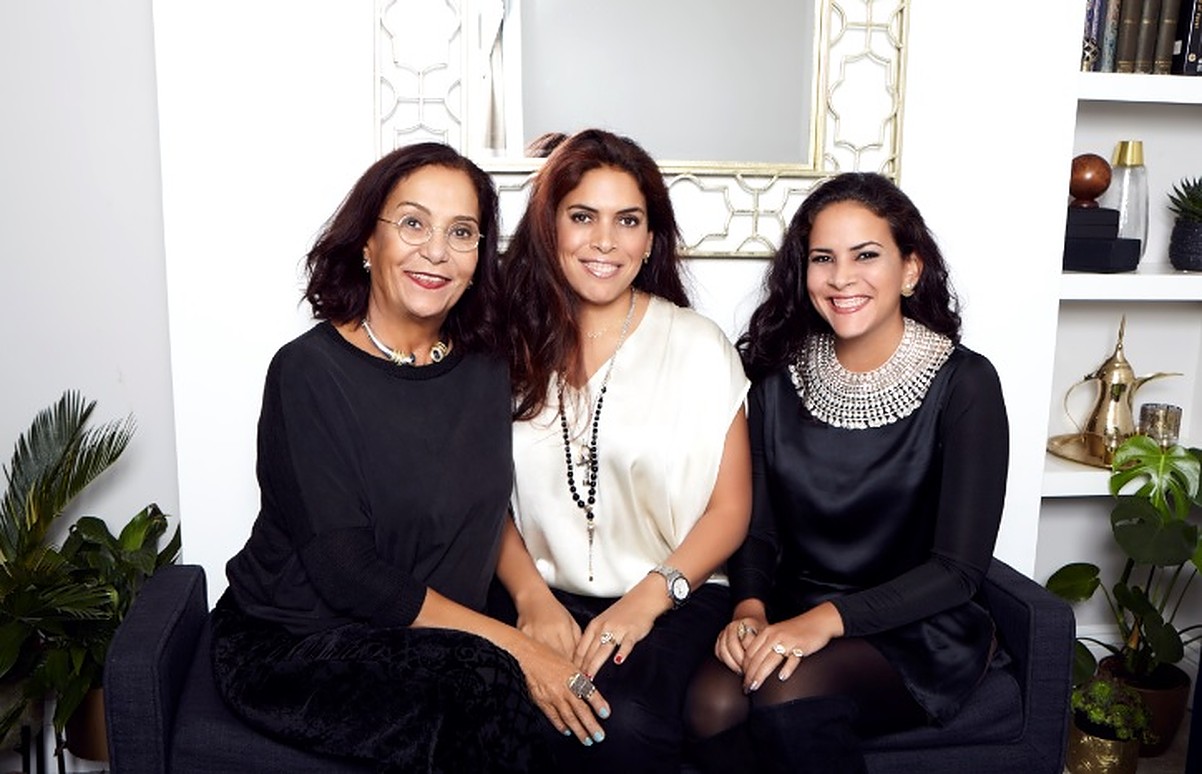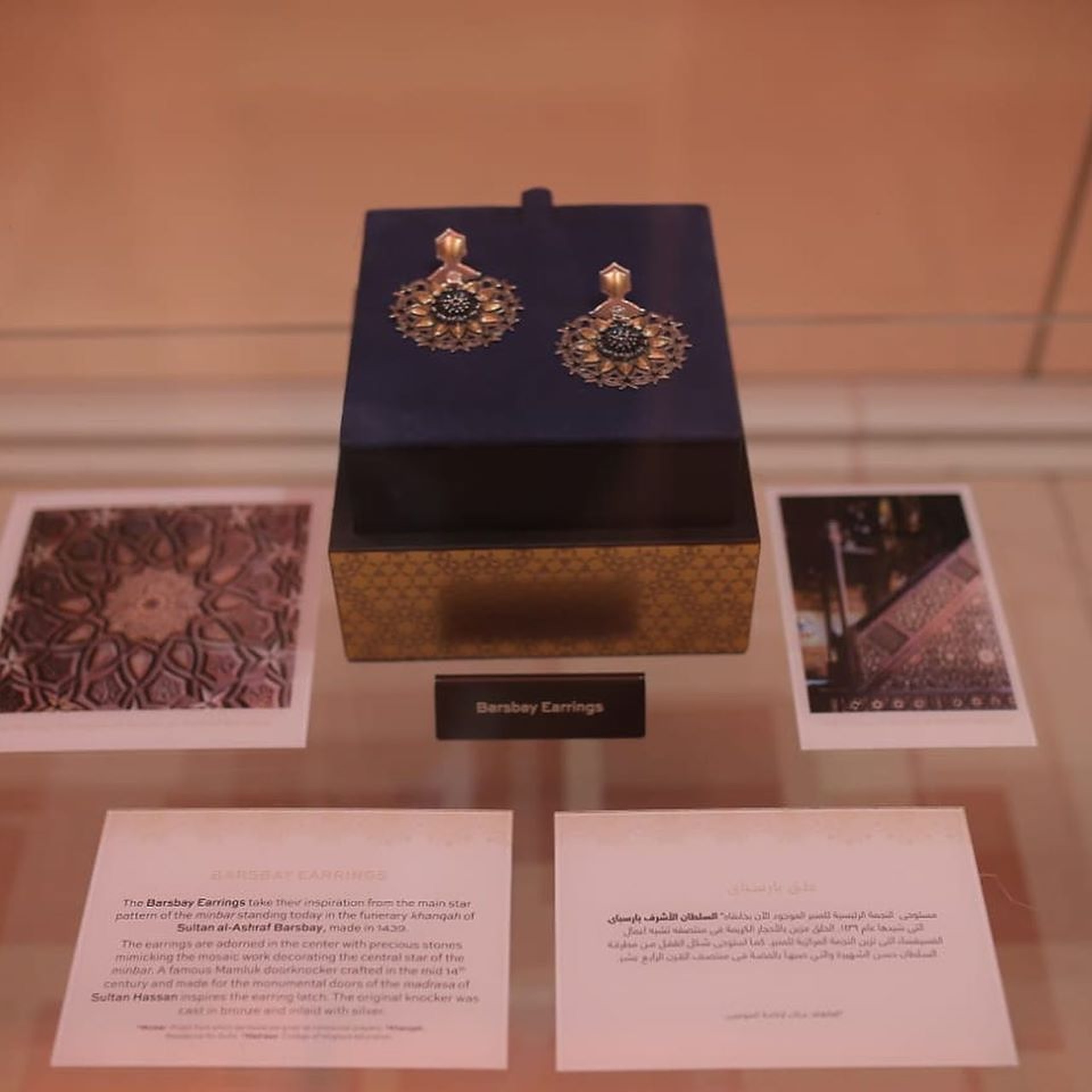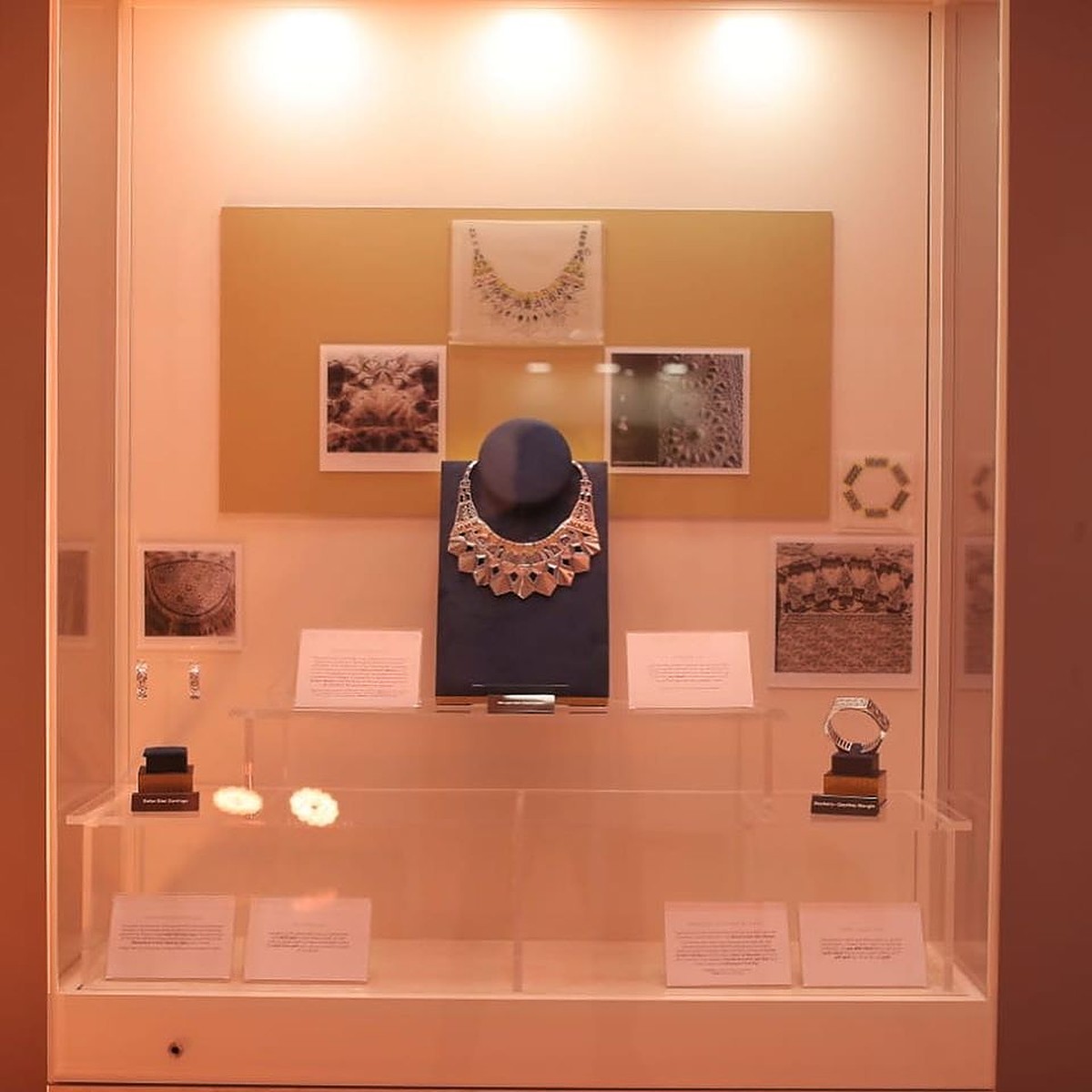Against the backdrop of the exquisite and glorious Museum of Islamic Art in Cairo, with an entrance that carries an aura of sophistication, elegance and historical treasures, Azza Fahmy Jewelry’s new Mamluk collection was displayed under each architectural inspiration for the jewelry piece.
In this collection, Azza Fahmy follows in the footsteps of the renowned Iraqi architect and designer Zaha Hadid who often designed wearable architectural models. However, she goes even further by brining back old cultures to life, preserving key moments in Egypt’s history through magical and impeccable designs worn by modern women.
Since 1969, when Azza Fahmy first invaded that male dominated field of jewelry making to pursue her passion, the jewelry design house grew to be a global phenomenon with great provenance, with the recent announcement of the opening of their first American storefront at the Waldorf Astoria in Los Angeles.
Egyptian Streets spoke with creative director Azza Fahmy, CEO Fatma Ghali and head designer Amina Ghali to learn more about the Mamluk collection and their future plans:

What was the idea of the woman that you had in mind when designing this collection?
The Azza Fahmy woman is an individual that is bold and cosmopolitan. She has an appreciation of culture, art, authentic craftsmanship and exclusive jewelry that tells a story.
What was the process like in designing this collection – from the inspiration to the designs and making the pieces? Was there anything that distinguished this collection from the other collections?
It was a lengthy process, one that took almost 3 years. It started when I met Dr Omneya Abdelbarr, researcher at the Victoria & Albert museum, and she shed light on the Mamluk era and how it’s the peak of the renaissance period in Islamic history.
I then took my team from draftsmen to marketers and visited the most important Mamluk monuments in old Cairo from where we drew our inspirations.
And this is what distinguished this collection from other collections, the fact that the inspirations are architectural elements like buildings, monuments, walls, marble patterns, star motifs on Minbars, Mihrabs and domes. – Azza Fahmy

The Shajar Al Durr ring is quite interesting, because it also represents an important part in Egypt’s history – having a female Muslim leader – did you want to pass on her legacy to future generations?
Shajar Al Durr was a leader and an innovator in Mamluk architecture, she was the first to build the mausoleum of her late husband Al Saleh Nejm eldin (mausoleums are well known for domes), right next to his madrassa (which are symbolized by minarets), and since then, people started annexing their mausoleums to their religious structure, thus creating the well know architectural style of domes and minarets which Cairo is famous for today.
As a female leader, I wanted wearers of this unique piece to know the story behind this great woman and her important innovative style. – Azza Fahmy

A lot of the designs are also inspired by architectural designs, which is also not often found in modern jewelry, are you trying to revive this concept of combining architecture with jewelry?
When I started the research journey of Mamluk monuments, I found a wide richness in the intricate designs of marble panels, calligraphy, enameled glass, metalwork, inlaid woodwork with ebony and ivory, geometrical and floral decorations and carpets which was a new source of inspiration for me. All these elements inspired us to design the modern wearable art of this collection. – Azza Fahmy
What does the art of jewelry mean to you? Is it a luxury, a dialogue, or a reflection of one’s identity and culture?
It’s all of that but to us the most prominent is that it’s a personal story, a dialogue. I often hear stories from my clients about how they recognized their friends or acquaintances wearing Azza Fahmy pieces thus starting a conversation about the story of their pieces and why they wear them. Jewelry is a very personal item which people choose because of the connection they feel to each piece.
How do you try to always connect your foreign and local audiences with your designs? Do you think that different cultures perceive jewelry differently?
Our designs are mix of culture and heritage with a contemporary take on it which makes it relevant to a wider platform. We don’t take pieces as they are and recreate them, we reinterpret them to the modern woman of today
Globally, our clients are looking for a story, a piece that tell a story which is what they find in our jewelry.
Different cultures have different tastes, not necessarily that they perceive jewelry differently. I want to say that today with how the world is being connected, we’re moving away from geographies to interests and tastes. – Fatma Ghaly

Is there any vision for the future for the brand of Azza Fahmy, particularly in relation to younger audiences?
Every year we meet important global trendsetters to discuss the world happenings which ultimately influence the fashion trends and thus the jewelry trends.
A lot is happening in 2020 such as the big focus on Tutankhamon which will definitely influence our upcoming collections. – Amina Ghaly
As a brand, how do you give back to the community?
As a brand, we are always inspired by our surroundings, be it cultures, museums, countries, influential people or nature. So naturally when there’s a chance to give back to these surroundings we seize it. For example, this collection is inspired by the Mamluk era and its beautiful architecture, so we want raise funds through the sales of this collection to help restore the phenomenal door of Sultan Hassan Mosque. – Azza Fahmy






Comments (3)
[…] women like Azza Fahmy, prominent jewelry designer, was able to achieve this after she entered the male-dominated jewelry market in Egypt many years […]
[…] women like Azza Fahmy, prominent jewelry designer, was able to achieve this after she entered the male-dominated jewelry market in Egypt many years […]